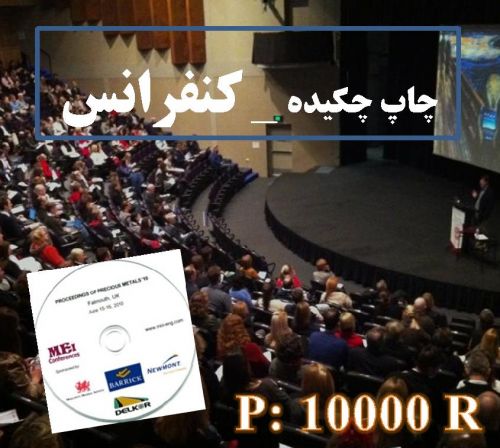Background and Aim: Vitamin E is an integral element of the liver's major lipid-soluble plasma lipoproteins and anti¬oxidants. Vitamin E is a nutrient that has both antioxidant and non-antioxidant properties. As an antioxidant, it inhibits LDL cholesterol, Vitamin E plays an important role in protecting oxidative stress and trapping free radicals in lipid membranes, degrading and enhancing ROS-related lipid peroxidation in the plasma membrane It is mutagenic and carcinogenic, it prevents both in vitro and in vivo conditions. And exerts a protective ef¬fect against oxidative-related diseases. Vitamin E can maintain liver cell morphological stability and cell membrane integrity, and improve necrosis. Research has shown that vitamin E can effectively mitochondrial morphology, network. Endoplasmic reticulum and restore the activity of antioxidant enzymes (CAT, SOD and GSH-PX). In addition, vitamin E inhibits mitochon¬drial ROS production by enhancing mitochondrial membrane potential and improving mitochondrial function. Among the non-antioxidant properties of vitamin E can be the administra¬tion of prostacyclin, reducing inflammation and reducing cell adhesion molecules. Vitamin E protects cells and subcellular structures from oxidative damage by reducing LPO products. When vitamin E was used alone, hepatic LPO decreased and GSH levels increased. Vitamin E as a protection against tox¬icity increased GSH and TAS levels and reduced MDA, TOS and XO levels compared to control groups. Vitamin E can de¬crease plasma corticosterone in mice exposed to stress. Vitamin E can also reduce adipose tissue lipolysis by interfering with the glucocorticoid response, because glucocorticoids stimu¬late lipolysis. Glucocorticoid receptor signal transduction has also been implicated in the expression of Irs2, Pdk4, Angptl4 and Ppargc1a genes. Vitamin E significantly reduced the set¬tings of Ppargc1a, Pdk4, Irs2 and Cpt2 and tended to lower the levels of Angptl4 and Slc22a5 mRNA genes. Vitamin E sup¬plements prevent the increase in circulating fatty acids (FFA) and induce inflammation in the liver. Vitamin E alters the liver transcriptional response to synthesis and inflammation of fat and cholesterol. CAMP-dependent pathways of catecholamine are important activators of lipolysis as well as transcriptional regulators of Irs2 and Ppargc1a. The potential inhibitory effect of vitamin E on cAMP signaling begins with inhibition of the upstream regulator of CREB.Considering the above and the usefulness of vitamin E, consuming large amounts of vitamin E may have negative effects. Methods: Adult male and female Wistar rats weighing 220 g were used, divided into six experimental groups, and received oral gavage doses of vitamin E and oil from day zero of gesta¬tion until 28 days after birth. they received. And a number of offspring were anesthetized on day 28 after birth and liver was removed for histopathological evaluation and activity of anti¬oxidant enzymes, MDA, GPX, SOD, catalase assay and stored at -80 ° C. Microtomes were cut to about 5 microns in thickness and stained by H&E method and studied by light microscopy (magnification 400). Data were analyzed by SPSS software at the significant level (P≤0.05). Results: In this study, significant reductions in MDA oxidative enzymes were observed in vitamin E groups compared to the control group (P <0.05).As well as GPX levels, catalase increased significantly compared to controls (P <0.05). And in histopathological studies, the number of hepatic hepatocytes in doses of 400, 800, 1200, and vitamin E increased significantly compared to the control, NAVE, and oily groups (P <0.05).And relatively little damage was observed at a dose of 1200. Conclusion: The study looked at antioxidant enzymes and found that low-dose vitamin E had a positive effect on oxidative stress and decreased free radicals, as well as reducing the toxicity of ROS-induced liver cells caused by high doses of vitamin E. It also reduces damage to liver cells, lobules and hepatocytes.
کلید واژگان :Vitamin E, Liver, Antioxidant, Free Radical, Rat, Histopathology
ارزش ریالی : 200000 ریال
با پرداخت الکترونیک
جزئیات مقاله
- کد شناسه : 7162388263916290
- سال انتشار : __99
- نوع مقاله : چکیده مقاله پذیرفته شده در کنفرانس ها(فایل کامل مقاله بارگزاری گردد)
- زبان : انگلیسی
- محل پذیرش : چهارمین کنگره بین المللی و شانزدهمین کنگره ملی ژنتیک
- برگزار کنندگان : تهران - دانشگاه تربیت مدرس, انجمن ژنتیک ایران, دانشگاه تربيت مدرس, انجمن ژنتيك ايران
- تاریخ ثبت : 1400/03/27 03:00:39
- ثبت کننده : سجاد کوشکی
- تعداد بازدید : 367
- تعداد فروش : 0
